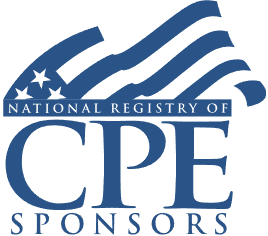Federal and State Partnership Audit Defense: BBA Audit Regime, Imputed Underpayment, Push-Out Election, Nexus

Welcome! Strafford is now BARBRI! The expert courses you know from the trusted global leader in legal education.
Course Details
- smart_display Format
On-Demand
- signal_cellular_alt Difficulty Level
Intermediate
- work Practice Area
Tax Preparer
- event Date
Tuesday, April 22, 2025
- schedule Time
1:00 p.m. ET./10:00 a.m. PT
- timer Program Length
110 minutes
-
BARBRI is a NASBA CPE sponsor and this 110-minute webinar is accredited for 2.0 CPE credits.
-
BARBRI is an IRS-approved continuing education provider offering certified courses for Enrolled Agents (EA) and Tax Return Preparers (RTRP).
This webinar will detail how tax professionals and partnerships can appropriately respond to IRS examinations of partnerships. Our panel of pass-through entity experts will explain the BBA audit regime, address imputed underpayment calculations and modifications, and discuss when and how to make a push-out election.
Faculty

Mr. Hodges is a principal and the partnership tax leader for Hancock Askew & Co LLP. He has extensive experience gained in national partnership groups at both PwC and BDO where he advised clients on a range of complex partnership transactions, including mergers and acquisitions, initial public offerings, secondary offerings, Up-C transactions, leveraged partnership transactions, and debt workouts. Mr. Hodges expertise also extends to addressing issues related to capital account maintenance, special allocations, basis adjustments, and liability allocations. In addition to his time in public accounting, he led the tax function for a Family Office. Mr. Hodges experience working for a Family Office has given him unique insights into not only the technical aspects of transactions, but also the emotional aspects, making him an invaluable asset to his clients. He takes pride in advising clients through transactions – whether they are buying, selling, or restructuring.

Mr. Rendziperis provides state and local tax advice to companies in the financial services, private equity, real estate, technology, manufacturing, oil and gas, and service sectors. He has more than 15 years of experience advising clients on controversy, litigation, planning, implementation and compliance issues related to income and franchise tax, sales and use tax, excise and property taxes, unclaimed property, and tax incentives and credits.
Description
The IRS recently announced it "… is accelerating our work in the partnership arena, which has been overlooked for more than a decade and allowed tax abuse to go on for far too long." It is also well known that they are using AI to better focus their efforts. These examinations are taking place, and the mechanics of calculating adjustments stemming from an IRS audit are far from clear-cut. Calculating adjustments arising from an IRS audit is a convoluted and necessary process.
As a result of an examination, the imputed underpayment arrives with Form 886-A, Explanation of Items, which details the calculation. Since the tax rate used for the adjustment is the highest individual tax rate, 37 percent for 2024, tax practitioners must give credence to the modifications available under Regs. Sec. 301.6225-2(d), which can substantially reduce the partnership's overall tax adjustment. The modifications allowed include adjustments for partners' pull-in adjustments, treaty modifications, a partner's tax-exempt status, and other situations that can result in a significantly lower tax adjustment.
Similarly complex and beneficial, a push-out election must be considered and calculated after an IRS assessment. This election allows a partnership to allocate adjustments to the partners in place for the year being examined. Prior to BBA, partners were audited rather than the partnership itself, and individual partners bore the burden of any additional tax liability. Flow-through advisers need to understand the mechanics and options available in response to IRS audit determinations.
Listen as our panel of pass-through experts provides examples of standard IRS audit adjustments, including appropriate steps to take to reduce the tax burden imposed as a result of an IRS audit of a partnership.
Outline
- Introduction
- Brief overview of BBA regime
- Objective of training
- Understanding the imputed underpayment (IU)
- Concept of the imputed underpayment
- Base calculation formula
- IRS determination of adjustments
- Modifying the imputed underpayment
- Options for modification
- Available modification methods
- Process and timeline for modifications
- Push-out election process
- What is the push-out election
- Push-out election timeline
- Calculation of partner-level tax from push-out
- Example calculation
- Decision-making: pay IU vs. push out
- Nexus
- State audit process
- Preparing for state and local tax income tax audits
Benefits
The panel will review these and other critical issues:
- The BBA audit regime's impact on IRS examinations of partnerships
- How the imputed underpayment is calculated
- Tax-saving modifications to the imputed underpayment available under Regs. Sec. 301.6225-2(d)
- When a partnership should consider a push-out election
- Detailed examples including the mechanics of calculating and allocating push-out adjustments
NASBA Details
Learning Objectives
After completing this course, you will be able to:
- Identify available modifications to an imputed underpayment
- Determine how the BBA audit regime impacted IRS audits of partnerships
- Ascertain when a partnership should consider a push-out election
- Decide what modifications are available to imputed underpayment adjustments
- Field of Study: Taxes
- Level of Knowledge: Intermediate
- Advance Preparation: None
- Teaching Method: Seminar/Lecture
- Delivery Method: Group-Internet (via computer)
- Attendance Monitoring Method: Attendance is monitored electronically via a participant's PIN and through a series of attendance verification prompts displayed throughout the program
- Prerequisite: Three years+ business or public firm experience preparing complex tax forms and schedules, supervising other preparers or accountants. Specific knowledge and understanding of pass-through taxation, including taxation of partnerships, S corporations and their respective partners and shareholders.

Strafford Publications, Inc. is registered with the National Association of State Boards of Accountancy (NASBA) as a sponsor of continuing professional education on the National Registry of CPE Sponsors. State boards of Accountancy have final authority on the acceptance of individual courses for CPE Credits. Complaints regarding registered sponsons may be submitted to NASBA through its website: www.nasbaregistry.org.

Strafford is an IRS-approved continuing education provider offering certified courses for Enrolled Agents (EA) and Tax Return Preparers (RTRP).
Unlimited access to premium CLE courses:
- Annual access
- Available live and on-demand
- Best for attorneys and legal professionals
Unlimited access to premium CPE courses.:
- Annual access
- Available live and on-demand
- Best for CPAs and tax professionals
Unlimited access to premium CLE, CPE, Professional Skills and Practice-Ready courses.:
- Annual access
- Available live and on-demand
- Best for legal, accounting, and tax professionals
Unlimited access to Professional Skills and Practice-Ready courses:
- Annual access
- Available on-demand
- Best for new attorneys
Related Courses

Ireland as a Destination for U.S. and UK Taxpayers: Tax Considerations
Available On-Demand

Determining U.S. Shareholder and CFC Status
Available On-Demand

Key Tax Provisions in LLC Operating Agreements: Interpreting Special Allocation, Safe Harbor, DRO, QIO Clauses
Friday, June 6, 2025
1:00 p.m. ET./10:00 a.m. PT
Recommended Resources
How CPE Can Bridge the Gap Between What You Know and What You Need to Know
- Career Advancement